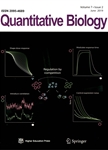Modeling of double ridge waveguide using ANN
Modeling of double ridge waveguide using ANN作者机构:Department of Electronics & Communication Engineering St. Ann'sCollege of Engineering and Technology Chirala A.E India
出 版 物:《Frontiers of Electrical and Electronic Engineering in China》 (中国电气与电子工程前沿(英文版))
年 卷 期:2012年第7卷第3期
页 面:299-307页
学科分类:12[管理学] 1201[管理学-管理科学与工程(可授管理学、工学学位)] 081104[工学-模式识别与智能系统] 08[工学] 0835[工学-软件工程] 0802[工学-机械工程] 0811[工学-控制科学与工程] 080201[工学-机械制造及其自动化] 0812[工学-计算机科学与技术(可授工学、理学学位)]
基 金:the Major Research Project supported by University Grants Commission Government of India
主 题:ridge waveguide radio frequency (RF),computer-aided design (CAD) artificial neural network(ANN) forward and inverse models
摘 要:The ridge waveguide is useful in various microwave applications because it can be operated at a lower frequency and has lower impedance and a wider mode separation than a simple rectangular waveguide. An accurate model is essential for the analysis and design of ridge waveguide that can be obtained using electromag- netic simulations. However, the electromagnetic simula- tion is expensive for its high computational cost. Therefore, artificial neural networks (ANNs) become very useful especially when several model evaluations are required during design and optimization. Recently, ANNs have been used for solving a wide variety of radio frequency (RF) and microwave computer-aided design (CAD) problems. Analysis and design of a double ridge waveguide has been presented in this paper using ANN forward and inverse models. For the analysis, a simple ANN forward model is used where the inputs are geometrical parameters and the outputs are electrical parameters. For the design of RF and microwave components, an inverse model is used where the inputs are electrical parameters and the outputs are geometrical parameters. This paper also presents a comparison of the direct inverse model and the proposed inverse model.



